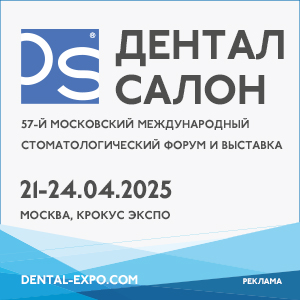DOI:
10.37988/1811-153X_2024_3_66Analysis of the causes and features of the course of gum recession in various clinical conditions
Downloads
Abstract
Dentist’s patients are increasingly making high aesthetic demands, striving for a successful and attractive image. One of the obstacles to a beautiful smile is the problem of gum recession, which in many cases is associated with diffraction defects, hypersensitivity of dentin, gingival inflammation and bruxism. The problem of predicting the course of gum recession and planning adequate comprehensive treatment remains an acute issue. The purpose of the study is to summarize the available data and analyze the causes and features of the course of gum recession in various clinical conditions.Materials and methods.
A systematic review of the literature data was conducted, 7456 publications were found, presented in international electronic databases: PubMed, Google Search, Ebsco, Embase, Web of Science, ScienceDirect, SciELO and eLibrary from 2013 to 2023. Based on the selection criteria, 43 publications were selected, which included the results of studying the etiology, pathogenesis, prevalence, diagnosis, clinical course, features of treatment and prevention of gum recession. The methodology of this study meets the requirements for systematic reviews and meta-analyses of PRISMA.
Results.
The study analyzes the causes of gum recession: the role of traumatic and microbial factors is evaluated, the features of periodontal biotype, structure, position and function of teeth, features of jaw bone tissue, features of the anatomical structure of gum tissues and the influence of somatic pathology are described. The clinical conditions associated with gum recession are considered: smile aesthetics, dentin hypersensitivity, root caries, non-carious lesions of hard tissues of teeth, orthodontic treatment. Special attention is paid to the probability of progression of gum recession.
Conclusions.
The presented detailed systematic analysis showed that the problem of gum recession today has a high prevalence and has not been sufficiently studied. The authors agree that it is necessary to build a clear system of primary prevention of gum recession and the clinical conditions accompanying it. The periodontal status of the patient should be carefully studied already at the planning stage of orthodontic, therapeutic, orthopedic and surgical treatment. The data obtained during the study can help dental practitioners and researchers in rational planning and an integrated approach to the treatment and prevention of gum recession.
Key words:
gum recession, treatment of gum recession, etiology of gum recession, dentin hypersensitivity, orthodontic treatment, aesthetics of smile, lesions of hard tissues of teethFor Citation
[1]
Moiseev D.A., Kopetsky I.S., Guseva O.Yu., Faustova E.E., Ogloblin A.A., Kuliev R.M., Vostrikov V.O., Rakhmankulov D.V. Analysis of the causes and features of the course of gum recession in various clinical conditions. Clinical Dentistry (Russia). 2024; 27 (3): 66—77. DOI: 10.37988/1811-153X_2024_3_66
References
- Imber J.C., Kasaj A. Treatment of gingival recession: When and how? Int Dent J. 2021; 71 (3): 178—187. PMID: 34024328
- Mamaladze M., Khutsishvili L., Zarkua E. Distribution of carious and non-carious cervical lesions and gingival recession at age related aspects. Georgian Med News. 2016; 18—23. PMID: 27661270
- Garibyan E.A. Comparative analysis of surgical methods for increasing the width of keratinized attached gums in patients with recession elimination: master‘s thesis. Moscow, 2020. 170 p. (In Russian).
- Makeeva I.M., Budaychieva Z.S., Polyakova M.A., Margaryan E.G., Novozhilova N.E., Musiyev A.A. Special aspects of individual oral hygiene in patients with I class gingival recession. Stomatology. 2019; 4: 25—28 (In Russian). eLIBRARY ID: 39548508
- Rumyantsev V.A., Nekrasov A.V., Moiseev D.A., Zadorohniy D.V., Pankin P.I. Biofilm in endodontics. Part II. Methods of struggle against biofilm in endodontic treatment of teeth (review of literature). Endodontics Today. 2018; 2: 38—42 (In Russian). eLIBRARY ID: 35575636
- Do T., Damé-Teixeira N., Naginyte M., Marsh P.D. Root surface biofilms and caries. Monogr Oral Sci. 2017; 26: 26—34. PMID: 29050018
- Shcherbakov A.S., Kuznetsova M.B., Kuznetsov D.L., Ivanova S.B. The dynamics of blood circulation in marginal gingiva after crown preparation by different ledge locations. Stomatology. 2013; 2: 40—43 (In Russian). eLIBRARY ID: 19034120
- Mikhailova E.S., Dzhakhangirova N.Z. The state of hemodynamics of periodontal tissues in patients with gum recession. The scientific aspect. 2023; 7: 1026—1036 (In Russian). eLIBRARY ID: 54395610
- Moiseev D.A., Volkov S.I., Konov A.A., Kulyukina M.A. The morphological and functional relationship between dental pulp and periodontal tissue in the aspect of endo-perio lesions. Parodontologiya. 2021; 4: 289—299 (In Russian). eLIBRARY ID: 47596088
- Zhao L., Wang X.Y., Xu Y., Meng S. [Relationship of orthodontic treatment and periodontal soft tissue health]. Hua Xi Kou Qiang Yi Xue Za Zhi. 2018; 36 (6): 595—601 (In Chinese). PMID: 30593102
- Saleeva G., Saleev R., Mustakimova R., Saleeva L. Formation of the gingival recession in patients with bruxism. Actual Problems in Dentistry. 2020; 3: 60—65 (In Russian). eLIBRARY ID: 44153724
- Shashurina S.V. Improvement of surgical treatment methods for gum recessions: master‘s thesis. Tver, 2017. 281 p. (In Russian).
- Haneet R.K., Vandana L.K. Prevalence of dentinal hypersensitivity and study of associated factors: a cross-sectional study based on the general dental population of Davangere, Karnataka, India. Int Dent J. 2016; 66 (1): 49—57. PMID: 26582076
- Hennequin-Hoenderdos N.L., Slot D.E., Van der Weijden G.A. The incidence of complications associated with lip and/or tongue piercings: a systematic review. Int J Dent Hyg. 2016; 14 (1): 62—73. PMID: 25690049
- Bherwani C., Kulloli A., Kathariya R., Shetty S., Agrawal P., Gujar D., Desai A. Zucchelli‘s technique or tunnel technique with subepithelial connective tissue graft for treatment of multiple gingival recessions. J Int Acad Periodontol. 2014; 16 (2): 34—42. PMID: 24844026
- Choudhari P., Pillai A., Zade R., Amirishetty R., Shetty S. Gingival veneer: a novel technique of masking gingival recession. J Clin Diagn Res. 2015; 9 (1): ZD12—4. PMID: 25738090
- Kofina V., An H., Rawal S.Y. Iatrogenic acid-induced gingival recession during crown cementation: A case report. Aust Dent J. 2021; 66 (3): 332—336. PMID: 33438220
- Reddy K.V., Nirupama C., Reddy P.K., Koppolu P., Alotaibi D.H. Effect of iatrogenic factors on periodontal health: An epidemiological study. Saudi Dent J. 2020; 32 (2): 80—85. PMID: 32071536
- Jati A.S., Furquim L.Z., Consolaro A. Gingival recession: its causes and types, and the importance of orthodontic treatment. Dental Press J Orthod. 2016; 21 (3): 18—29. PMID: 27409650
- Nikiforidou M., Tsalikis L., Angelopoulos C., Menexes G., Vouros I., Konstantinides A. Classification of periodontal biotypes with the use of CBCT. A cross-sectional study. Clin Oral Investig. 2016; 20 (8): 2061—2071. PMID: 26689570
- Fischer K.R., Richter T., Kebschull M., Petersen N., Fickl S. On the relationship between gingival biotypes and gingival thickness in young Caucasians. Clin Oral Implants Res. 2015; 26 (8): 865—869. PMID: 24580810
- Esfahrood Z.R., Kadkhodazadeh M., Talebi Ardakani M.R. Gingival biotype: a review. Gen Dent. 2013; 61 (4): 14—7. PMID: 23823337
- Rossell J., Puigdollers A., Girabent-Farrés M. A simple method for measuring thickness of gingiva and labial bone of mandibular incisors. Quintessence Int. 2015; 46 (3): 265—71. PMID: 25328921
- Zweers J., Thomas R.Z., Slot D.E., Weisgold A.S., Van der Weijden F.G. Characteristics of periodontal biotype, its dimensions, associations and prevalence: a systematic review. J Clin Periodontol. 2014; 41 (10): 958—71. PMID: 24836578
- Zucchelli G., Mounssif I. Periodontal plastic surgery. Periodontol 2000. 2015; 68 (1): 333—68. PMID: 25867992
- Grudianov A.I., Krechina E.K., Mustafina F.N., Avraamova T.V. Computer capillaroscopy for periodontal microcirculation assessment in patients with early atherosclerotic lesions. Stomatology. 2014; 4: 24—26 (In Russian). eLIBRARY ID: 22414594
- Reddy A.A., Kumar P.A., Sailaja S., Chakravarthy Y., Chandra R.V. Concomitant correction of a soft-tissue fenestration with keratinised tissue augmentation by using a rotated double-pedicle flap during second-stage implant surgery A case report. J Clin Diagn Res. 2015; 9 (12): ZD16—9. PMID: 26816998
- Park J.B. Widening keratinized tissue using modified free gingival graft. J Oral Implantol. 2016; 42 (1): 114—6. PMID: 24968262
- Cortellini P., Bissada N.F. Mucogingival conditions in the natural dentition: Narrative review, case definitions, and diagnostic considerations. J Clin Periodontol. 2018; 45 Suppl 20: S190-S198. PMID: 29926504
- Rumyantsev V.A., Fedotova T.A., Zablotskaya M.V., Yusupova Yu.I., Ryabikov M.D., Moiseev D.A. New method of complex treatment of endodont-parodontal diseases by nanoimpregnation and cupral- curettage. Upper Volga Medical Journal . 2017; 4: 4—9 (In Russian). eLIBRARY ID: 32239360
- Moiseev D., Rumyancev V., Volkov S., Rodionova E., Zhuravleva D. Computer modeling of endo-periodontal lesion. The possibilities of using a 3D model in the educational process. Cathedra. Dental education. 2022; 80: 44—47. http://kstom.ru/c8044
- Moiseev D.A. Particularities of prevention, treatment and prognosis of dental pulp pathology in patients with chronic periodontitis: master‘s thesis abstract. Tver, 2022. 22 p. (In Russian).
- Moiseev D.A., Kopetsky I.S., Nikolskaya I.A., Ilyukhin G.S., Gazarov S.Yu., Madatyan G.K., Sevastyanova V.V., Kurbatina A.B. The problem of primary infection in endo-periodontal lesions: a systematic review. Endodontics Today. 2023; 2: 115—123 (In Russian). eLIBRARY ID: 54647058
- Moiseev D.A., Kopetsky I.S., Nikolskaya I.A., Guseva O.Yu., Mikhailova E.G., Eremin D.A., Patrakova N.N., Pogabalo I.V., Ogloblin A.A. Treatment, prevention and outcomes of endo-periodontal lesions: a modern view. Clinical Dentistry (Russia). 2023; 4: 18—28 (In Russian). eLIBRARY ID: 59397984
- Pini-Prato G., Magnani C., Zaheer F., Buti J., Rotundo R. Critical Evaluation of Complete Root Coverage as a Successful Endpoint of Treatment for Gingival Recessions. Int J Periodontics Restorative Dent. 2015; 35 (5): 655—63. PMID: 26357695
- Pini-Prato G., Magnani C., Zaheer F., Rotundo R., Buti J. Influence of inter-dental tissues and root surface condition on complete root coverage following treatment of gingival recessions: a 1-year retrospective study. J Clin Periodontol. 2015; 42 (6): 567—74. PMID: 25918876
- Cairo F., Cortellini P., Tonetti M., Nieri M., Mervelt J., Pagavino G., Pini-Prato G.P. Stability of root coverage outcomes at single maxillary gingival recession with loss of interdental attachment: 3-year extension results from a randomized, controlled, clinical trial. J Clin Periodontol. 2015; 42 (6): 575—81. PMID: 25932592
- Niemczyk W., Niemczyk S., Prokurat M., Grudnik K., Migas M., Wągrowska K., Lau K., Kasperczyk J. Etiology of gingival recession a literature review. Wiad Lek. 2024; 77 (5): 1080—1085. PMID: 39008601
- Torres-Lagares D., Hita-Iglesias P., Azcárate-Velázquez F., Garrido-Serrano R., Ruiz-de-León-Hernández G., Velazquez-Cayón R., Gutiérrez-Pérez J.L. What are the histologic effects of surgical and orthodontic treatment on the gingiva of palatal impacted canines? J Oral Maxillofac Surg. 2015; 73 (12): 2273—81. PMID: 26226645
- Kim D.M., Neiva R. Periodontal soft tissue non-root coverage procedures: a systematic review from the AAP Regeneration Workshop. J Periodontol. 2015; 86 (2 Suppl): S56—72. PMID: 25644300
- Agudio G., Cortellini P., Buti J., Pini Prato G. Periodontal conditions of sites treated with gingival augmentation surgery compared with untreated contralateral homologous sites: An 18- to 35-year long-term study. J Periodontol. 2016; 87 (12): 1371—1378. PMID: 27523520
- Agudio G., Chambrone L., Pini Prato G. Biologic remodeling of periodontal dimensions of areas treated with gingival augmentation procedure: A 25-year follow-up observation. J Periodontol. 2017; 88 (7): 634—642. PMID: 28338390
- Bertl K., Melchard M., Pandis N., Müller-Kern M., Stavropoulos A. Soft tissue substitutes in non-root coverage procedures: a systematic review and meta-analysis. Clin Oral Investig. 2017; 21 (2): 505—518. PMID: 28108833
Downloads
Received
January 16, 2024
Accepted
August 9, 2024
Published on
October 2, 2024











